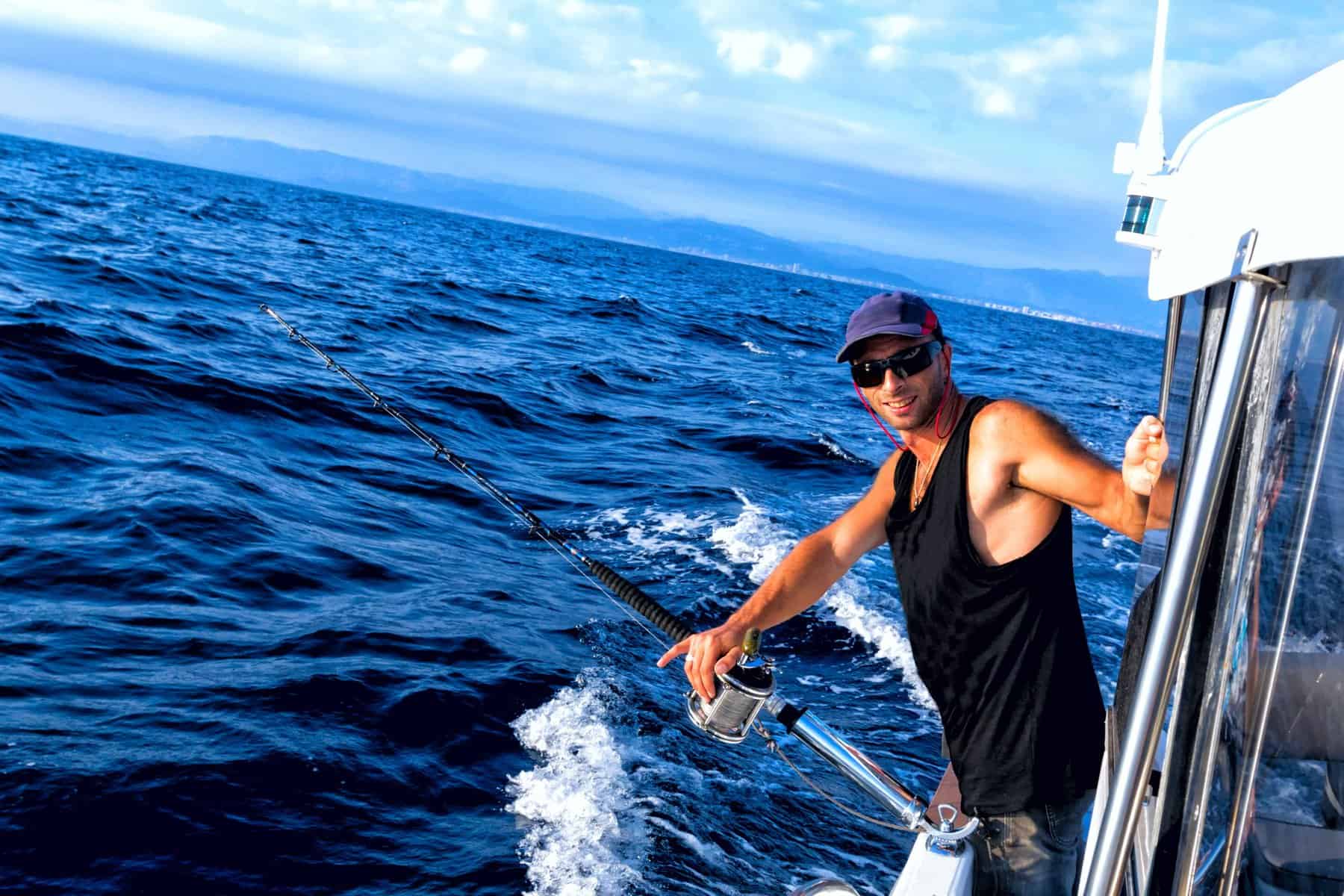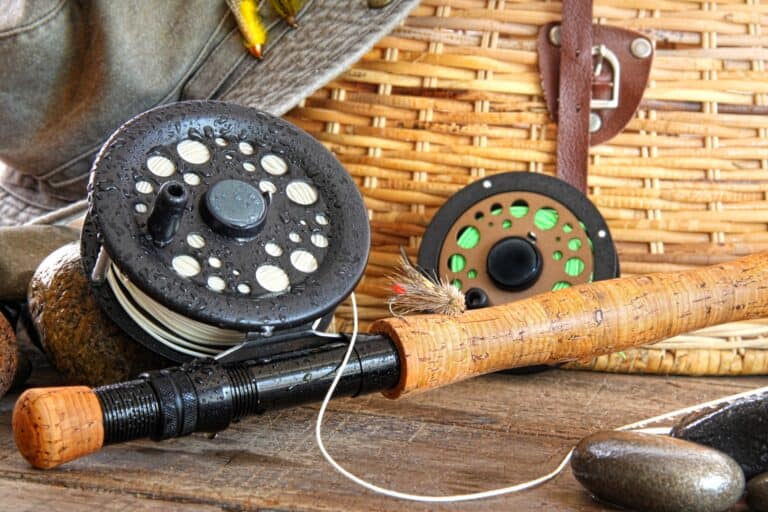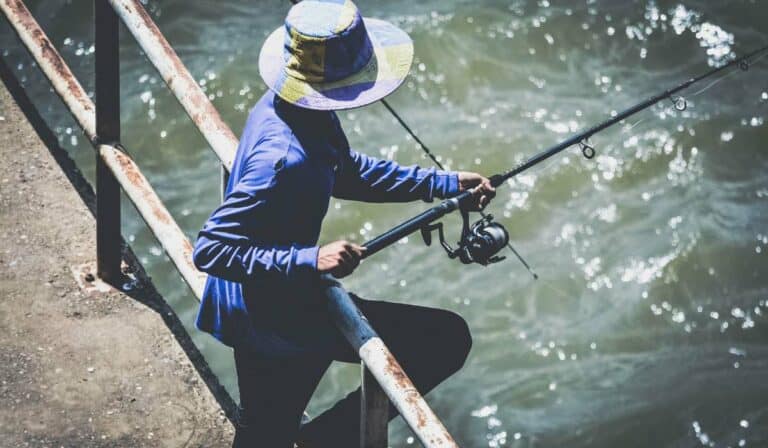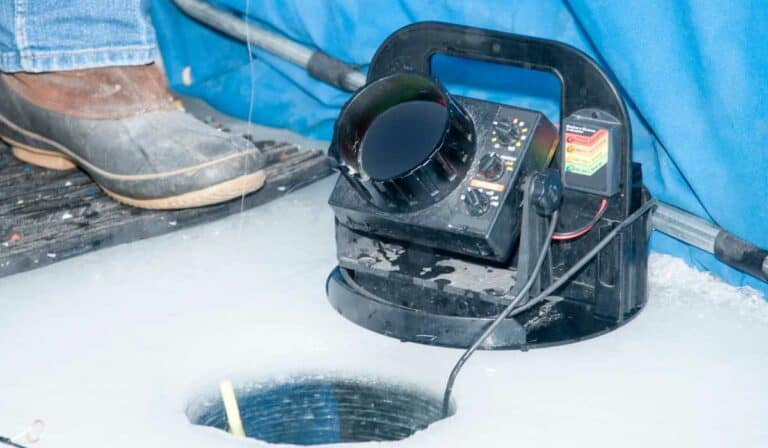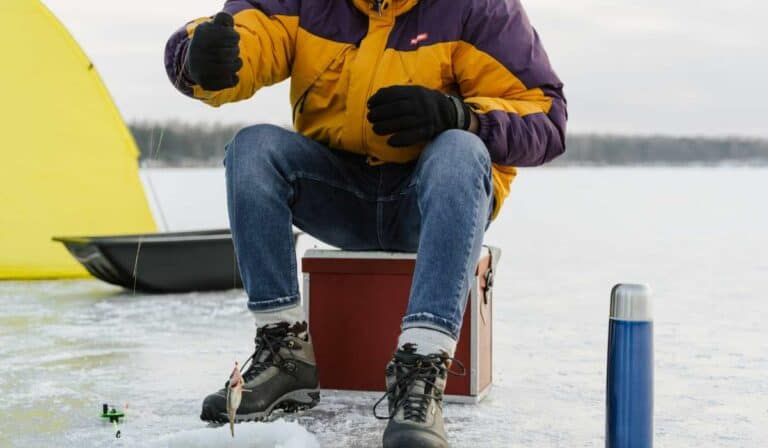Best Saltwater Fishing Tools
For the best saltwater fishing experience, a wide selection of gear and equipment is available. In this guide, we will delve into various aspects of saltwater fishing and explore some of the top-rated tools available in the market.
We will discuss how to choose the right saltwater fishing rod, reels, tackle, and lures for optimal performance. Additionally, we’ll share valuable tips for catching fish in saltwater environments and highlight the benefits of using live bait as opposed to artificial alternatives.
Lastly, selecting an appropriate boat plays a crucial role in successful saltwater fishing expeditions; hence our guide also covers essential factors to consider when making this decision. By understanding these key elements and investing in the best saltwater fishing tools, you are well on your way towards reeling in impressive catches during your next ocean adventure.
Table of Contents:
- Choosing the Right Saltwater Fishing Rod
- Fishing Rod Materials
- Rod Length & Action
- Rod Power & Line Rating
- Your Target Species & Fishing Environment
- Best Saltwater Fishing Reels
- Essential Saltwater Fishing Tackle
- Best Saltwater Fishing Lures
- 5 Tips for Catching Fish in Saltwater
- Understanding Tides and Currents
- Fishing Structure
- Casting Techniques
- Using the Right Bait and Lures
- Paying Attention to Weather Conditions
- Maintaining Patience and Persistence
- Benefits of Using Live Bait for Saltwater Fishing
- Selecting the Right Boat for Saltwater Fishing
- Factors to Consider When Choosing a Saltwater Fishing Boat
- Maintaining Your Saltwater Fishing Boat
- Conclusion
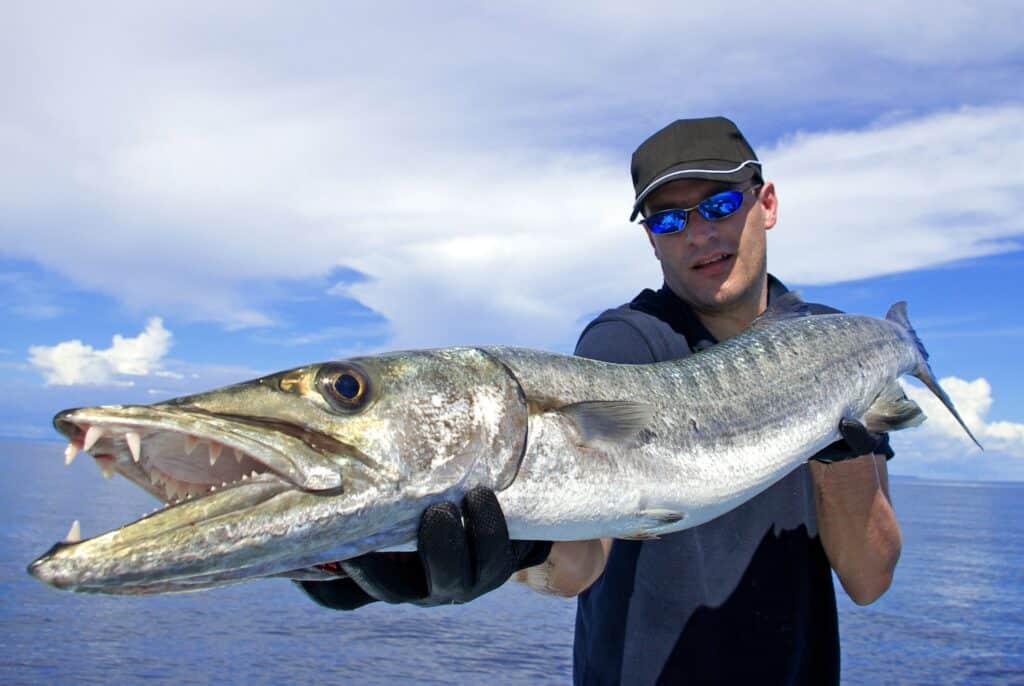
1. Choosing the Right Saltwater Fishing Rod
Embarking on a saltwater fishing adventure can be an exhilarating experience, but having the right equipment is crucial for success. To ensure success, a saltwater fishing rod of top-notch quality is essential. In this section, we will discuss how to select the best saltwater fishing rod for your needs and budget.
Fishing Rod Materials
The first factor to consider when choosing a saltwater fishing rod is its material composition. For saltwater fishing rods, graphite and fiberglass are the two primary materials used in their construction. Graphite rods tend to be lighter, more sensitive and firmer than fiberglass ones; however, they may also fracture easily if subjected to excessive pressure or shock.
Fiberglass rods, on the other hand, offer greater durability and flexibility but tend to be heavier and less sensitive compared to graphite models. Some manufacturers have developed hybrid rods that combine both materials’ benefits while minimizing their drawbacks.
Rod Length & Action
Rod length plays an essential role in determining casting distance as well as leverage during fish fights. Shorter rods (6-7 feet) provide better accuracy when casting at close range targets while longer ones (8-10 feet) allow for increased casting distance which can be beneficial when targeting offshore species from shorelines or piers.
Action refers to how much bend there is in a rod when pressure is applied at its tip – fast action bends mostly near the tip whereas slow action bends throughout the entire length of the rod. Fast action rods are ideal for single-hook lures and provide better sensitivity, while slow action rods work well with treble hooks and can handle heavier loads.
Rod Power & Line Rating
The power of a saltwater fishing rod refers to its resistance to bending under load – light power bends easily whereas heavy power requires more force to bend. It’s essential to match your rod’s power with the size and strength of fish you’re targeting; otherwise, you risk breaking your equipment or losing your catch.
Line rating is another crucial factor when selecting a saltwater fishing rod as it indicates the recommended range of line strengths that can be used without damaging the rod. Make sure to choose a line within this range for optimal performance.
Your Target Species & Fishing Environment
Finally, consider what species you’ll be targeting and where you plan on fishing before making your decision. Different types of saltwater environments (e.g., inshore flats, offshore reefs) require different types of gear suited specifically for those conditions. Additionally, certain species may necessitate specialized equipment such as fly-fishing setups or trolling gear.
Key Points To Remember:
Choosing the right saltwater fishing rod is crucial for success in your fishing adventure. Consider factors such as material composition, length and action, power and line rating, as well as your target species and fishing environment to select an appropriate and effective saltwater fishing rod tailored perfectly for your needs.
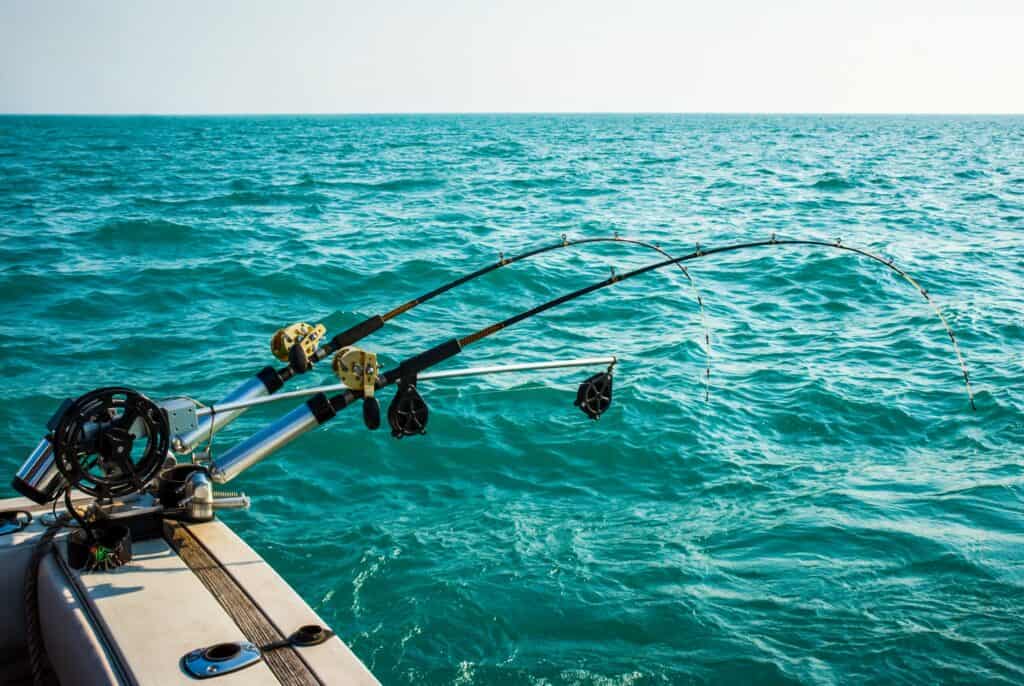
Best Saltwater Fishing Reels
Finding the perfect saltwater fishing reel is crucial for a successful and enjoyable fishing experience. Selecting the ideal saltwater reel for your fishing excursion can be a daunting task, given the abundance of choices. To aid in narrowing down the search for the ideal saltwater fishing reel, we will now examine some of today’s top-rated models.
A. Spinning Reels
Spinning reels are popular among anglers due to their ease of use and versatility in various fishing conditions. They are ideal for casting light lures and baits at long distances while providing smooth drag systems that help prevent line breakage when fighting large fish.
- PENN Battle II: This durable spinning reel features a full metal body with HT-100 carbon fiber drag washers that provide powerful yet smooth performance.
- Shimano Stradic CI4+ FB: Known for its lightweight design, this reel offers an ultra-smooth reeling experience thanks to its Hagane gearing system and X-Ship technology.
- Daiwa BG: The Daiwa BG boasts an aluminum body and side plate, making it both strong and corrosion-resistant – perfect for saltwater environments.
B. Baitcasting Reels
If you’re targeting larger species or using heavier lures, then a baitcasting reel might be your best choice. These reels offer more control over casting distance as well as increased power when retrieving heavy loads from deep waters.
- Abu Garcia Revo SX: This high-performance baitcasting reel features a lightweight design, advanced gear system, and powerful D2 Gear Design for smooth operation in saltwater conditions.
- Lew’s Speed Spool LFS: With its compact size and strong aluminum frame, this reel is perfect for anglers looking to cast heavy lures with precision and control.
C. Conventional Reels
Last but not least are the conventional reels, which are specifically designed for trolling or bottom fishing in deep water. These reels offer increased line capacity and greater drag power compared to spinning or baitcasting reels – making them ideal for targeting large saltwater species.
- PENN Squall LevelWind: This versatile conventional reel features a graphite frame, machined aluminum spool, and HT-100 carbon fiber drag system that can handle the toughest saltwater environments.
- Shimano Tekota A: The Shimano Tekota A offers exceptional durability thanks to its die-cast aluminum frame while providing smooth performance through its Hagane body construction.
Key Points To Remember:
This section explores the best saltwater fishing reels, including spinning, baitcasting, and conventional options. Key factors to consider when choosing a reel include target species, preferred techniques, budget constraints, weight balance and ease of use. Investing in quality equipment will enhance your overall experience on exciting saltwater adventures.
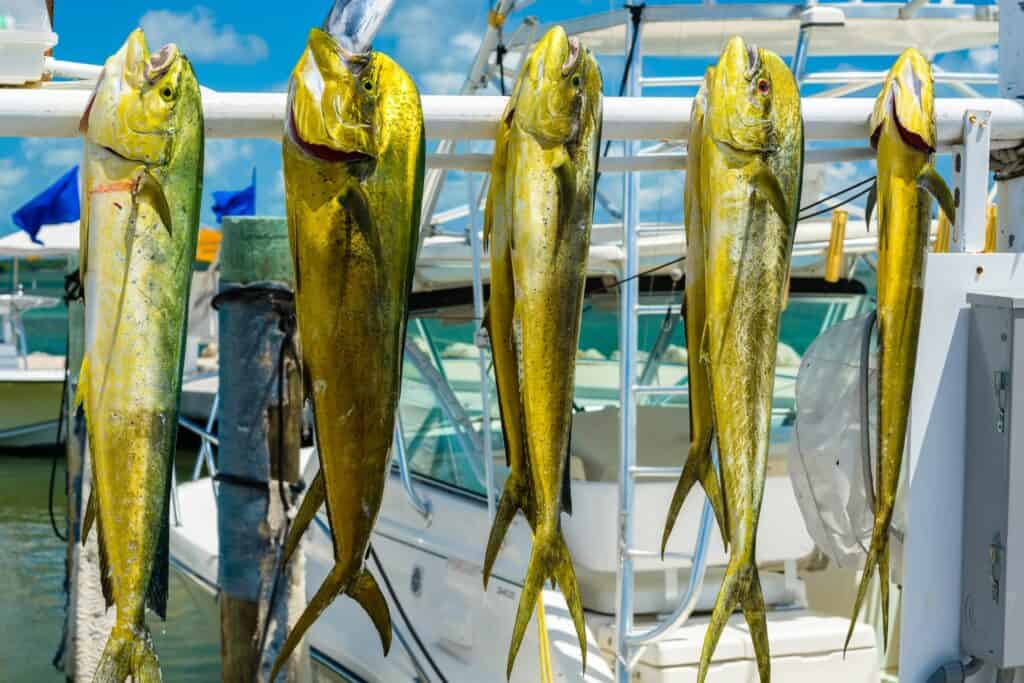
3. Essential Saltwater Fishing Tackle
For saltwater angling, having the correct tackle is key for achieving success. To ensure a successful outing, we’ll cover the necessary tackle and equipment for saltwater fishing.
A. High-Quality Fishing Line
The first item on our list of essential saltwater fishing tackle is a high-quality fishing line. Saltwater can be tough on your equipment, so investing in a durable and strong line will ensure that you don’t lose any fish due to breakage or fraying.
1. Monofilament Line:
This type of line is affordable and easy to handle, making it popular among anglers of all skill levels. However, monofilament lines tend to absorb water over time which may weaken them.
2. Braided Line:
Braided lines are made from multiple strands woven together for increased strength and durability – perfect for battling larger fish species found in saltwater environments.
3. Fluorocarbon Line:
If you’re looking for an invisible option with excellent abrasion resistance properties, fluorocarbon lines might be the best choice for you.
B. Terminal Tackle Essentials
In addition to choosing the right fishing line, there are several other pieces of terminal tackle that should be included in every angler’s arsenal when heading out into salty waters:
- Hooks: Selecting appropriate hook sizes and styles based on your target species is key. Consider using circle hooks as they provide better catch rates while reducing the risk of gut-hooking fish.
- Weights: Sinkers or weights help keep your bait at the desired depth. Opt for non-toxic materials like tungsten or steel to minimize environmental impact.
- Swivels: A quality swivel prevents line twist and allows for smoother casting, especially when using heavy lures or live bait rigs.
- Leader Material: Incorporating a leader made from fluorocarbon or monofilament will provide added strength and abrasion resistance between your mainline and hook setup – essential in saltwater conditions.
C. Saltwater-Specific Lure Selection
Last but not least, having an assortment of effective saltwater-specific lures is crucial for success on the water. Some popular options include:
- Top Water Plugs: These floating lures create surface commotion that attracts predatory fish species such as redfish, snook, and striped bass.
- Jigs: Versatile jigging techniques can be used to target various depths in search of different types of fish including flounder, grouper, and more.
- Spoons: These flashy metal baits imitate injured baitfish by reflecting light while wobbling through the water column – perfect for enticing hungry predators like mackerel, bluefish, and even tarpon.
With these essential pieces of tackle in hand, you’ll be well-equipped to conquer any salty fishing adventure that comes your way. Remember to always practice proper catch-and-release techniques when necessary so future generations can enjoy the thrill of saltwater fishing too.
Having the right saltwater fishing tackle is essential for a successful and enjoyable day of angling. Next, let’s explore which lures are best suited for saltwater fishing.
Key Points to Remember:
To have a successful saltwater fishing trip, it’s essential to have the right tackle. This includes investing in high-quality fishing line, selecting appropriate terminal tackle essentials such as hooks and weights, and having an assortment of effective saltwater-specific lures like top water plugs and spoons. Remember to always practice proper catch-and-release techniques for future generations to enjoy.
4. Best Saltwater Fishing Lures
Having the correct lure for saltwater fishing can drastically enhance your odds of catching fish in this environment. Knowing which lures are most effective for saltwater fishing is key to your success. In this section, we’ll explore some of the top-rated and highly recommended saltwater fishing lures that you should consider adding to your tackle box.
Top Water Lures
Top water lures are designed to mimic baitfish swimming on the surface of the water, attracting predatory fish like redfish, snook, and striped bass. These types of lures work best during low light conditions such as early morning or late afternoon when fish are more likely to be feeding near the surface.
- Poppers: Poppers create a splashing noise that mimics an injured baitfish struggling at the surface.
- Walk-the-dog style: These lures have a side-to-side action when retrieved properly and imitate wounded prey trying to escape predators.
- Skip baits: Skip baits resemble small flying fish skimming across the water’s surface and attract larger game species like tuna and dorado (mahi-mahi).
Jigs
Jigs are versatile bottom-bouncing lures that can be used in various depths depending on their weight. They’re ideal for targeting species like grouper, snapper, flounder, and other bottom-dwelling fish. Jigs are accessible in a range of designs, dimensions, and hues to replicate the local prey or crustaceans that your intended species feed on.
- Bucktail jigs: These feature a lead head with hair-like fibers tied around it, imitating small baitfish or shrimp.
- Vertical jigs: Designed for high-speed jigging in deeper water, these lures attract fast-swimming predators like amberjack and king mackerel.
Soft Plastic Lures
Soft plastic lures are made from pliable materials that mimic the movement of live prey when retrieved through the water. They can be rigged weedless for fishing around structure or used with a weighted jig head to get down into deeper waters where fish may be holding.
- Paddle tail swimbaits: These have a wide tail that creates lifelike swimming action as they move through the water column.
- Jerk shads: With their slender profile and erratic darting motion, jerk shads entice predatory fish like speckled trout and snook to strike aggressively.
Trolling Lures
If you’re targeting big game species such as marlin, sailfish, wahoo or tuna while saltwater fishing offshore then trolling is often an effective method. There are many types of trolling lures available but some popular options include:
- Rigged ballyhoo: A natural bait option consisting of whole dead ballyhoo rigged behind skirts which create an irresistible combination for pelagic predators.
- Skirted trolling lures: These artificial lures feature a colorful skirt and often have a weighted head to help them dive below the surface, creating an enticing swimming action that draws in fish.
Remember, it’s essential to match your lure choice with the species you’re targeting and the local conditions. Experimenting with different types of saltwater fishing lures will help you discover what works best for your specific location and target species.
The right saltwater fishing lures can make all the difference in your success when out on the water, so be sure to choose wisely. Time to look at approaches and strategies for snaring fish in saltwater.
Key Points To Remember:
This section explores the best saltwater fishing tools, including top water lures like poppers and walk-the-dog style lures, versatile jigs for bottom-bouncing in various depths, soft plastic lures with lifelike swimming action, and trolling lures such as rigged ballyhoo and skirted trolling lures. It’s important to match your lure choice with the species you’re targeting and local conditions to increase your chances of success.
5 Tips for Catching Fish in Saltwater
If you’re aiming to improve your saltwater angling, it’s essential to gain knowledge of certain methods and tactics that can assist in snaring more fish. To improve your saltwater fishing success, here are some tips and tricks to consider.
Understanding Tides and Currents
Tides and currents play a significant role in saltwater fishing success. Fish are often more active during specific tide phases, so understanding how tides work is crucial. For example, many anglers find that they have better luck during incoming or outgoing tides as opposed to slack water periods. Check local tide charts before heading out to plan your trip accordingly.
Fishing Structure
Fish tend to congregate around structures like reefs, rocks, piers, jetties, or wrecks because these areas provide food sources and protection from predators. When targeting specific species of fish in saltwater environments, focus on casting near these structures for increased chances of success.
Casting Techniques
- Surf Casting: This technique involves standing on the shoreline or wading into shallow waters while casting long distances with heavy tackle designed for surf conditions.
- Jigging: Jigging is an effective method used by anglers who want to cover different depths quickly; it requires dropping a weighted lure vertically into the water column then rapidly retrieving it using short jerks of the rod tip.
- Trolling: Trolling entails dragging lures behind a moving boat at various speeds; this approach is particularly useful when targeting pelagic species like tuna or marlin.
Using the Right Bait and Lures
Selecting the appropriate bait or lure for your target fish is essential. Research which baits are most effective for specific species in your area, and consider using live bait if it’s available. For example, shrimp, squid, or small fish can be excellent choices depending on what you’re trying to catch. Additionally, experiment with different saltwater fishing lures to see which ones work best in various conditions.
Paying Attention to Weather Conditions
Fish behavior can change dramatically based on weather conditions; overcast days may lead to increased feeding activity near the surface while bright sunny days might push them deeper into cooler waters. Monitor local weather forecasts before heading out and adjust your tactics accordingly.
Maintaining Patience and Persistence
Saltwater fishing can sometimes be challenging due to factors such as changing tides, currents, wind direction/speeds, etc., so it’s important not to get discouraged if things don’t go according to plan right away. Persisting with fresh methods until you uncover the most effective approach for yourself is essential – honing your skill through repeated attempts yields great rewards.
By employing the strategies for snaring fish in salty waters, you can enhance your odds of success when angling. Moving on to the next heading, we will discuss the benefits of using live bait for saltwater fishing and how it can help improve your catches.
Key Points To Remember:
To catch more fish in saltwater, it’s important to understand tides and currents, focus on fishing structures like reefs or rocks, use the right bait and lures for your target species, pay attention to weather conditions and be patient. Different casting techniques such as surf casting, jigging or trolling can also increase your chances of success.
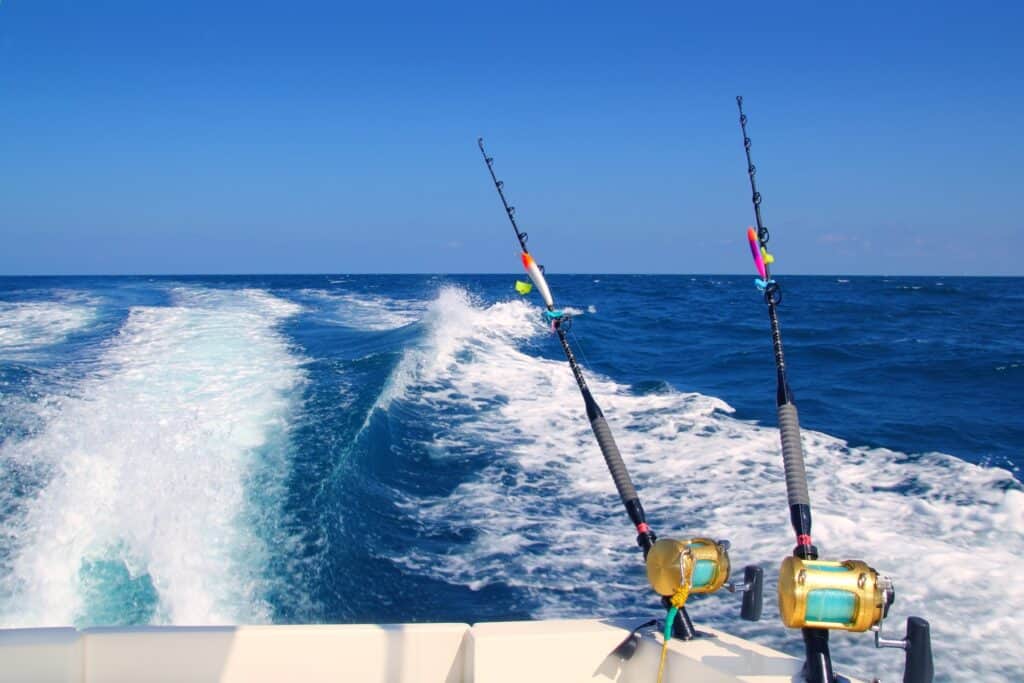
6. Benefits of Using Live Bait for Saltwater Fishing
If you’re new to saltwater fishing or looking to up your game, one essential aspect to consider is the type of bait you use. While artificial lures have their place in any angler’s tackle box, using live bait can often yield better results when fishing in salt water. Discover the benefits of using live bait and learn how to select and manage it proficiently in this section.
Why Choose Live Bait Over Artificial Lures?
- Natural appearance: One major advantage of using live bait is its natural appearance and movement in the water. Fish are more likely to be attracted by something that looks and moves like their usual prey than an artificial lure.
- Scent: Live baits emit a scent that attracts fish from far away distances, making them highly effective at drawing fish towards your hook. Artificial lures may not always have this same effect.
- Versatility: Different species of fish prefer different types of food; therefore, having a variety of live baits allows you to target multiple species during your fishing trip with ease.
Tips for Choosing and Handling Live Bait
- Selecting the right type: When choosing which kind of live bait to use for saltwater fishing, research what local fish species feed on naturally. For example, shrimp are a popular choice as they are eaten by many coastal predators such as redfish or speckled trout. Here is a list of the top 5 live baits for inshore saltwater fishing.
- Keeping your bait alive: To ensure that your live bait remains healthy and active, invest in a high-quality live well. This will provide an oxygenated environment to keep your baitfish or shrimp lively until they’re ready to be used.
- Proper hooking technique: Hooking live bait correctly is crucial for its effectiveness. For best results, it is advisable to hook live bait through their nose or just behind the dorsal fin so they can still swim freely without suffering too much from the hook.
Incorporating live bait into your saltwater fishing arsenal can significantly improve your chances of success. By understanding why it’s effective and following proper handling techniques, you’ll be well on your way to reeling in more fish during your next outing.
Using live bait for saltwater fishing can be a great way to increase your chances of success, as it helps attract the fish you are targeting. Opting for the correct vessel is a key element when arranging an effective excursion on the water; this following segment will analyze how to ensure you pick prudently.
Key Points To Remember:
Using live bait can be more effective than artificial lures when saltwater fishing due to its natural appearance, scent, and versatility. To choose and handle live bait effectively, research local fish species’ natural prey, invest in a high-quality live well to keep the bait alive, and hook it correctly through the nose or dorsal fin.
7. Selecting the Right Boat for Saltwater Fishing
Selecting the ideal vessel for your saltwater angling escapades can be a thrilling journey, yet it’s essential to make an educated choice dependent on your necessities and financial plan. In this section, we’ll explore some key factors to consider when choosing a suitable boat for saltwater fishing trips and provide tips on maintaining it properly.
Factors to Consider When Choosing a Saltwater Fishing Boat
- Type of fishing: The type of fishing you plan to do will greatly influence your choice of boat. For example, if you’re into offshore big game fishing, you’ll need a larger vessel with ample storage space and advanced navigation systems like those found in top-rated offshore boats.
- Budget: Your budget plays a crucial role in determining which boat is right for you. Be sure to factor in not only the initial purchase price but also ongoing costs such as fuel, maintenance, insurance, and storage fees.
- New vs used: Purchasing a new or used boat comes with its own set of pros and cons. New boats typically come with warranties and up-to-date technology; however, they are more expensive than their pre-owned counterparts that may require additional investments in repairs or upgrades.
- Size: A smaller vessel might be easier to maneuver and maintain but could limit your range while out at sea due to limited fuel capacity or lack of amenities like sleeping quarters or restroom facilities.
- Safety features: Ensure that any potential boats have adequate safety equipment such as life jackets, fire extinguishers, and emergency signaling devices. Additionally, consider investing in a marine VHF radio for communication purposes.
Maintaining Your Saltwater Fishing Boat
Proper maintenance is essential to ensure your boat’s longevity and performance during saltwater fishing trips. Here are some tips to help you keep your vessel in top shape:
- Rinse thoroughly after each use: Saltwater can be corrosive; therefore, it’s crucial to rinse your boat with fresh water after every trip to remove any salt residue that may cause damage over time.
- Regular engine checks: Regularly inspect the engine for signs of wear or corrosion and address any issues promptly. Changing the oil and filters according to the manufacturer’s recommendations will also help extend the life of your engine.
- Clean and protect upholstery: Clean vinyl seats using mild soap and water before applying a protective spray designed specifically for marine environments like Star Brite Vinyl Cleaner & Polish.
- Inflate tires properly: If your boat has a trailer, make sure its tires are inflated correctly as under-inflated tires can lead to poor handling on the road or even blowouts while transporting your vessel.
- Schedule regular inspections by professionals: Hiring an expert technician at least once per year ensures that potential problems are identified early on before they become costly repairs or safety hazards.
By carefully considering your needs and budget, you can find the perfect saltwater fishing boat to enhance your angling experiences. Remember that proper maintenance is key to ensuring a long-lasting and enjoyable relationship with your vessel. Happy boating.
Key Points To Remember:
Choosing the right boat for saltwater fishing requires considering factors such as type of fishing, budget, new vs used options, size and safety features. Proper maintenance is also essential to ensure longevity and performance during trips by rinsing thoroughly after each use, regularly inspecting the engine, cleaning and protecting upholstery, inflating tires properly and scheduling regular inspections by professionals.
Conclusion
In conclusion, having the best saltwater fishing tools can make all the difference in your experience on the water. It is important to choose the right rod and reel, have essential tackle, use effective lures and live bait, and select a suitable boat when planning your next saltwater fishing trip.

